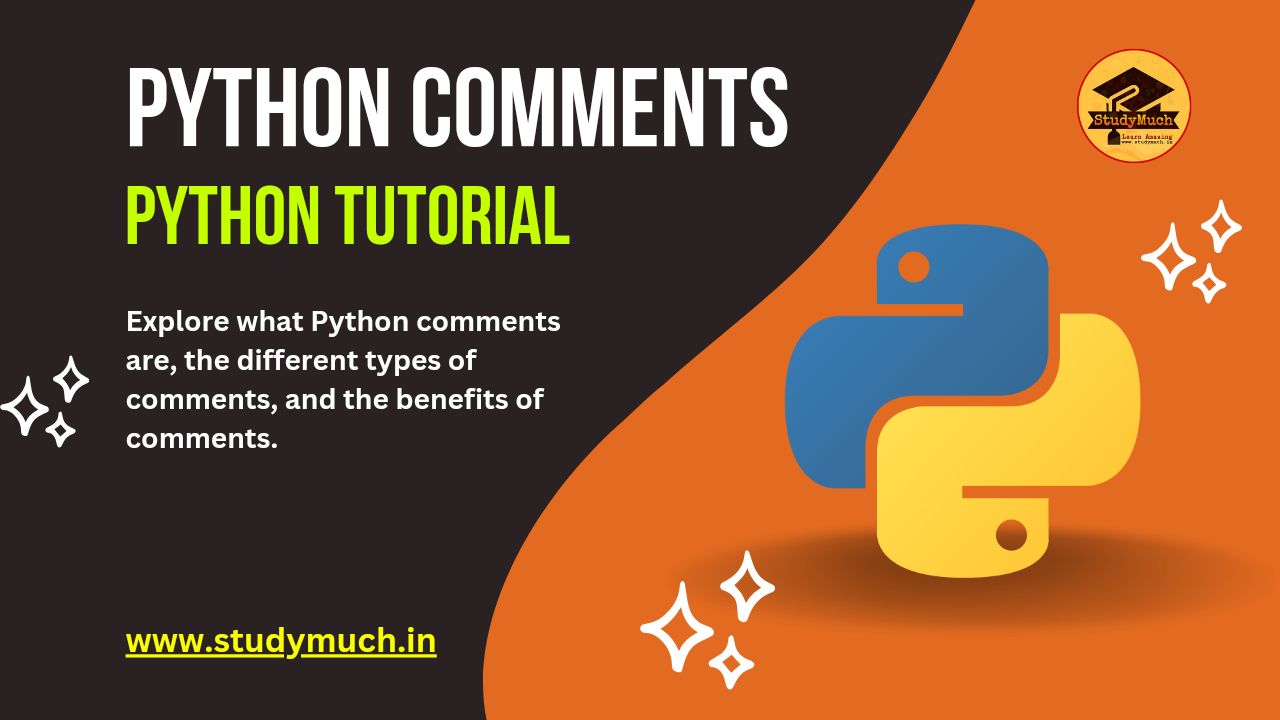Python Comments

Python Comments: Guide for Better Code Clarity
When it comes to writing clean and maintainable code, comments play a crucial role in enhancing code clarity and understanding. In Python, comments allow developers to add explanatory notes, annotations, or reminders directly within the code, without affecting its functionality. In this blog post, we will explore what Python comments are, the different types of comments, and the benefits of comments.
What is a Python Comment?
In Python, comments are lines of text that are ignored by the Python interpreter during program execution. They are meant solely for human readers to understand the code better and have no impact on the program’s behavior. Python comments are used to explain complex logic, document functions and classes, and provide insights into the code’s intentions. Comments will not be executed.

Single Line Comments:
The most common way to add a comment in Python is by using the “#” symbol. Anything written after the “#” symbol on the same line is treated as a comment.
# This is a single-line comment in Python print("Hello, World!")
Single line comments are helpful for providing brief explanations or context for a particular line of code.
Multiple Line Comments:
While Python does not have a specific syntax for multiline comments like some other programming languages, developers are often use triple quotes (”’ or “””) to create multiline comments.
''' This is a multiline comment in Python. You can write multiple lines here to describe a block of code or provide detailed documentation. ''' print("Welcome to Python!")
Alternatively, you can use triple quotes as multiline strings and leave them unassigned, effectively treating them as comments.
""" This is another way to create a multiline comment. It's similar to the previous method but used more commonly for docstrings. """ def my_function(): pass

Benefits of Using Comments:
Here given you important benefits of using comments in programming Python languages.
- Code Readability: Comments help make the code more readable and understandable by providing context and explanations for complex sections.
- Code Maintenance: When developers revisit their own or others’ code after a while, comments act as helpful reminders of the code’s purpose and functionality.
- Collaboration: In team projects, comments facilitate collaboration by allowing developers to communicate and understand each other’s code.
- Documentation Generation: Docstrings (multiline comments) can be automatically extracted to generate documentation using tools like Sphinx.
- Debugging: Comments can also serve as markers for temporarily removing code or isolating sections during debugging without deleting the code entirely.
- Learning and Teaching: For beginners learning Python, well-commented code serves as an excellent educational resource, helping them grasp the concepts more effectively.
Best Practices for Writing Comments:
While comments are a powerful tool, improper use or excessive commenting can hinder code readability. Follow these best practices to make the most out of comments:
- Be Clear and Concise: Write comments that are easy to understand and get to the point without unnecessary verbosity.
- Avoid Obvious Comments: Don’t comment on things that are self-explanatory from the code itself, like simple variable assignments.
- Keep Comments Updated: Maintain your comments as you modify the code to ensure they stay accurate and relevant.
- Use Meaningful Names: Meaningful variable and function names reduce the need for excessive commenting.
- Avoid Excessive Comments: Use comments sparingly, focusing on complex logic or important explanations.
Conclusion:
In conclusion, comments are an indispensable tool for Python developers to improve code readability, understanding, and collaboration. Single line comments are perfect for quick explanations, while multiline comments (using triple quotes) serve well for documenting functions, classes, or larger sections of code. By following best practices, you can effectively leverage comments to make your code more maintainable and enhance your overall development experience.
Remember, writing good comments is not just for others but also for your future self when you revisit the code. So, embrace the habit of adding clear and informative comments to create more elegant and understandable Python code. And if you have any doubt regarding this article, feel free to ask in the comment section without any hesitation.
Learn Also;



1 Comment
costume characters · August 16, 2023 at 12:03 pm
Woah! I’m really loving the template/theme of this website. It’s simple, yet effective. A lot of times it’s hard to get that “perfect balance” between superb usability and visual appeal. I must say that you’ve done a excellent job with this. Also, the blog loads very quick for me on Firefox. Outstanding Blog!